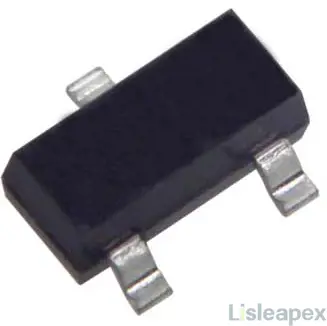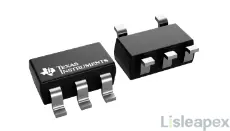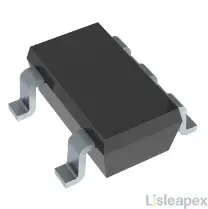Texas Instruments SN65 series is a range of digital signal converters and interface devices designed to handle various types of signal transmission. The SN65LVDT2DBVR, SN65LVDT2DBVT, and SN65LVDS2DBVR are all part of the SN65 series, each with its unique features and applications. Let me provide you with a detailed explanation:
Introduction to SN65DSI83, SN65DSI84, and SN65DSI85 DSI to LVDS bridges
SN65LVDT2DBVR

Features
- This is a low-voltage differential transmitter (LVDT) primarily used for converting differential signals into single-ended outputs.
- It supports a wide range of supply voltages from 2.7V to 3.6V.
- SN65LVDT2DBVR offers high noise immunity, making it suitable for long-distance data transmission in industrial environments.
Applications
- Used in industrial automation systems for sensor data transmission.
- In telecommunications equipment for signal processing and transmission.
SN65LVDT2DBVT

Features
- Similar to SN65LVDT2DBVR, it is also a low-voltage differential transmitter.
- Wide supply voltage range, from 2.7V to 3.6V. It has high noise immunity and stability.
Applications
Similar to SN65LVDT2DBVR, it is mainly used for signal transmission in industrial automation and telecommunications applications.
SN65LVDS2DBVR

Features
This is a low-voltage differential signal converter designed to convert differential signals into single-ended outputs.
The supply voltage range is 2.375V to 3.465V.
It features low power consumption and high bandwidth, making it suitable for high-speed data transmission.
Applications
High-speed communication systems, such as data center internal connections.
Video signal transmission.
Common Features
Differential Signal Conversion: All three devices can convert differential signals into single-ended outputs, suitable for various signal transmission needs.
Supply Range: All support a wide range of supply voltages, making them suitable for different power configurations.
Noise Immunity: They all have high noise immunity, making them suitable for data transmission in industrial environments.
Differences Features
Models and Applications: These three devices have slightly different model numbers and applications. SN65LVDS2DBVR is more suitable for high-speed data transmission, while SN65LVDT2DBVR and SN65LVDT2DBVT are better suited for sensor and general industrial automation applications.
Supply Range: Although they all support different supply voltage ranges, SN65LVDS2DBVR has the narrowest range and can only be powered between 2.375V and 3.465V.
Application Fields: SN65LVDS2DBVR is more suitable for high-speed communication and video signal transmission, while SN65LVDT2DBVR and SN65LVDT2DBVT are better suited for signal transmission in industrial automation and telecommunications.
Below, I have provided a more detailed comparison table:
|
Feature / Technical Specification |
SN65LVDT2DBVR |
SN65LVDT2DBVT |
SN65LVDS2DBVR |
|
Differential Input Voltage Range |
±0.2V 到 ±3.5V |
±0.2V 到 ±3.5V |
±0.2V 到 ±3.7V |
|
Output Voltage Range |
0V to 5V |
0V to 5V |
0.5V to 2.5V |
|
Maximum Data Transfer Rate |
10Mbps |
10Mbps |
400Mbps |
|
Supply Voltage Range |
2.7V to 3.6V |
2.7V to 3.6V |
2.375V to 3.465V |
|
Operating Temperature Range |
-40°C to +85°C |
-40°C to +85°C |
-40°C to +85°C |
|
Low Power Consumption |
No |
No |
Yes |
|
High Bandwidth |
No |
No |
Yes |
|
Output Drive Capability |
32mA |
32mA |
4mA |
|
EMI Resistance |
High |
High |
High |
|
Package |
SOT-23, SOIC |
SOT-23, SOIC |
SOT-23, SOIC |
|
Application Areas |
Industrial Automation, Telecom, Sensors |
Industrial Automation, Telecom, Sensors |
High-Speed Communication, Video |
The above table provides a more detailed overview of the technical specifications and features of these three devices, helping you better understand the differences between them. Depending on your specific application requirements, you can choose the model that suits your needs. Please note that this is a concise comparison table, and it's recommended to refer to the official datasheets of each device for more in-depth technical information and application guidance.
In summary
Based on the information provided, we can conclude:
If you need high-speed data transmission, especially in data centers or high-speed communication systems, SN65LVDS2DBVR is the better choice.
If you need to transmit sensor data in industrial automation systems or telecommunications equipment, SN65LVDT2DBVR and SN65LVDT2DBVT may be more suitable.
Ultimately, the choice depends on the supply voltage range and your specific requirements.
Stay updated with Lisleapex by signing up for the newsletter


 Congratulations On Your Successful Submission
Congratulations On Your Successful Submission
 Submission Failure
Submission Failure